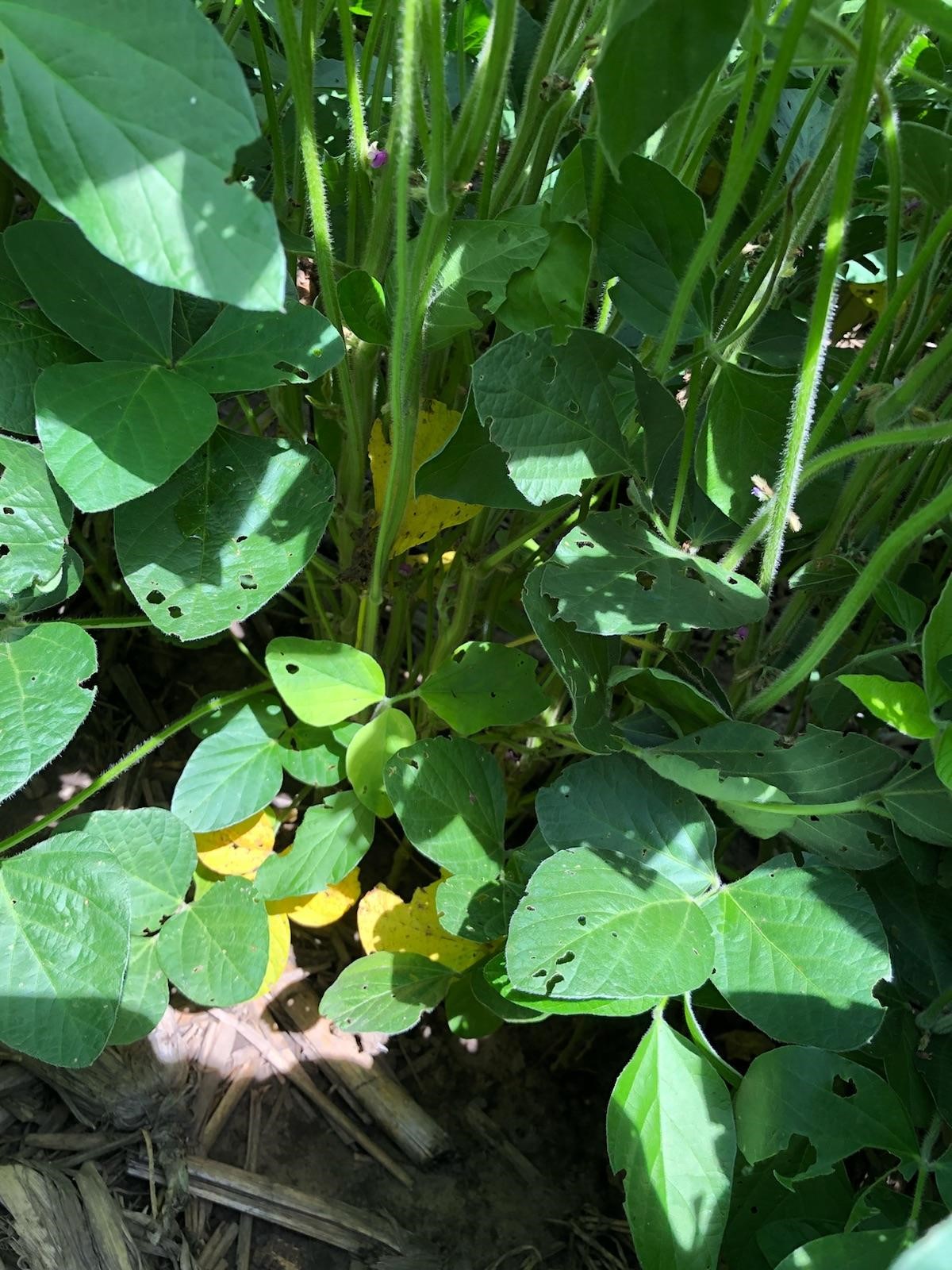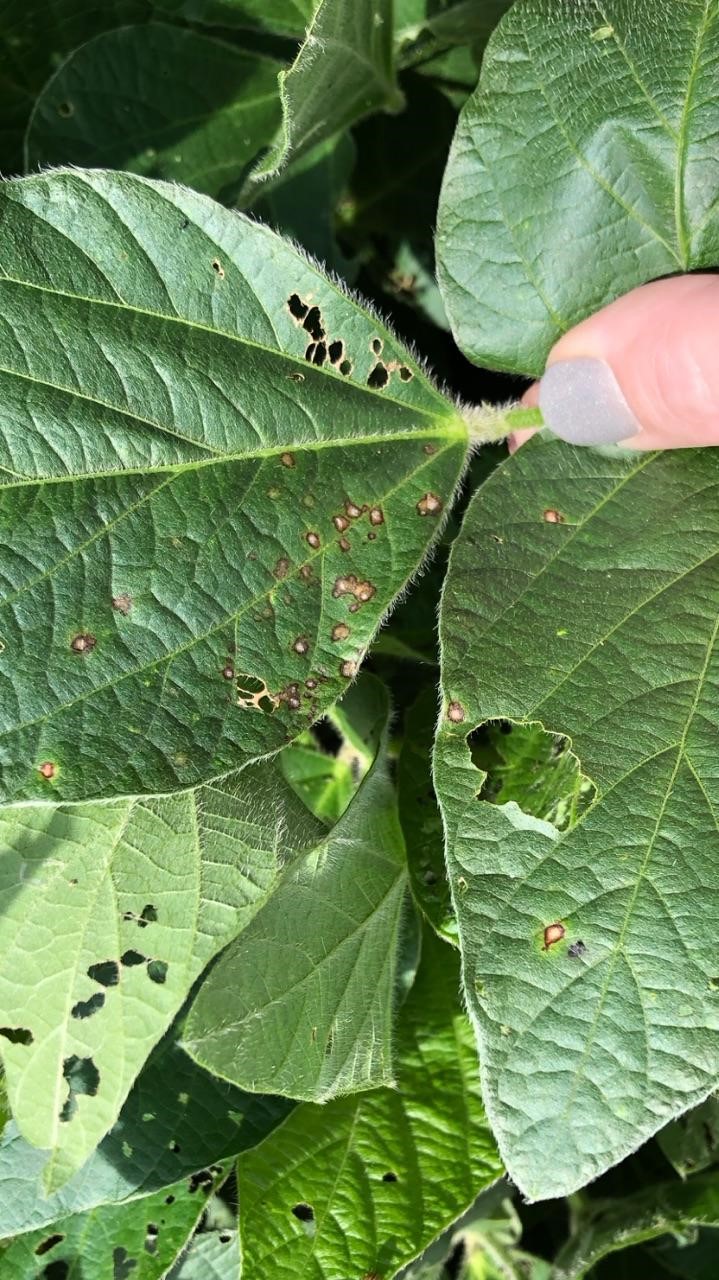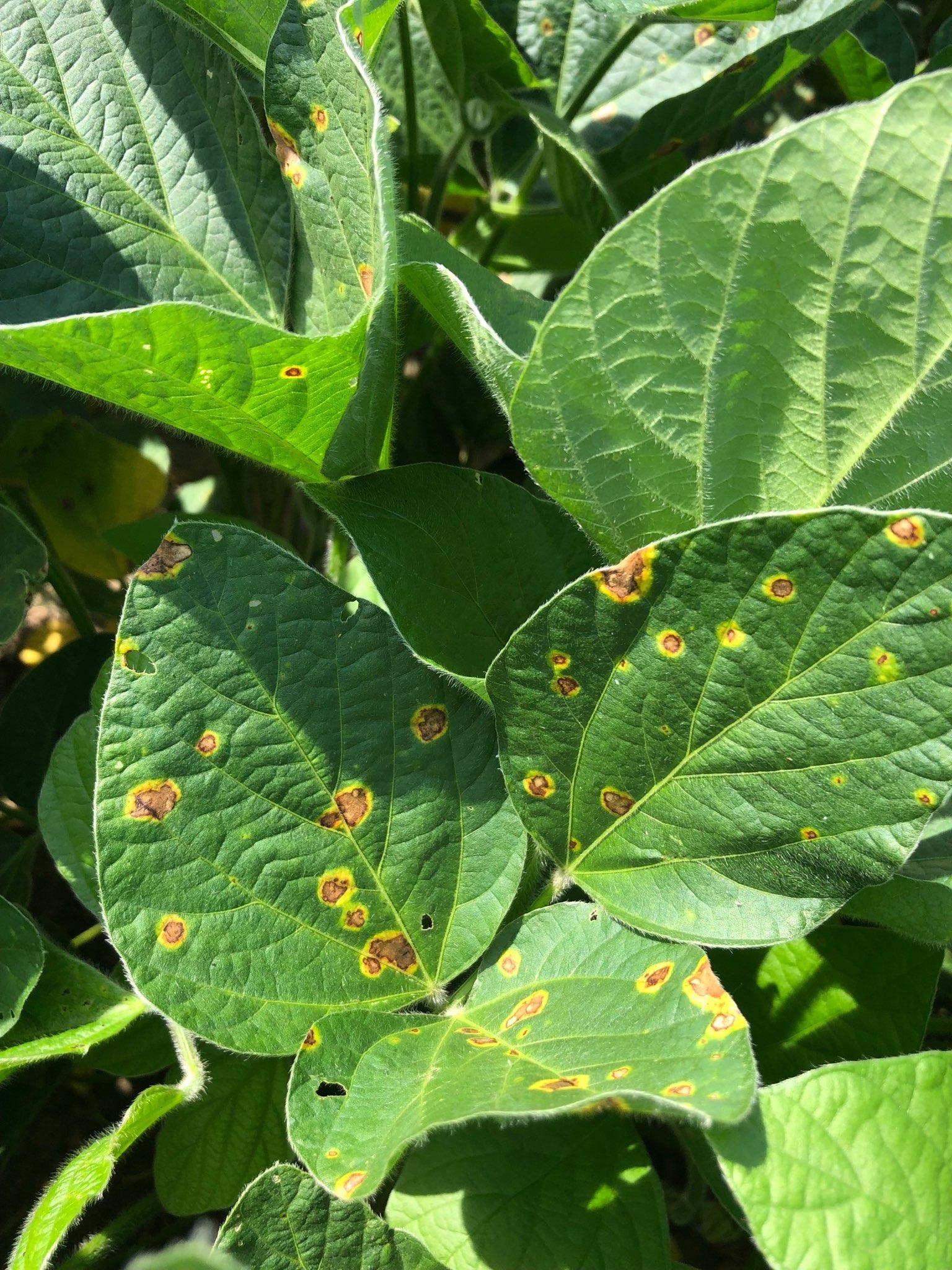Recently, I was asked, “How do I know if I should have sprayed a fungicide on my soybeans or not?” Below is a checklist of how to make these decisions and some photographs of a few foliar diseases.
- Check the weather and scout often. To know if a fungal disease is present, you’ve got to go to the field and look throughout the canopy. If it is warm, wet and humid, you probably have some disease present. There will be a lower fungicide yield response in a dry year, like 2012.
- Use a forecasting tool. If you are seeing gray leaf spot in your corn, then it is likely that you could be seeing fungal disease in your soybeans. You can also use the new smartphone app like the University of Wisconsin’s Sporcaster, a white mold prediction tool. The earlier the disease infection, the higher the disease risk to your soybeans.
- Make the right disease ID. Foliar diseases that are fungal (Septoria brown spot, Frogeye leafspot, and Cercospora leaf blight) generally respond to fungicide and bacterial (Bacterial blight or pustule) or an oomycete (Downy mildew) diseases will not respond to a fungicide.
- Are there disease thresholds?
- When looking for Septoria leaf blight, look at lower leaves and if it appears on more than 1/3 (some say ½) of the canopy, then you may want to think about a fungicide application.
- Only a few universities have established economic thresholds for Frogeye leaf spot. Some say to spray if you find 1 or 2 lesions, usually found in the top or throughout the canopy, every 25 feet of row. Others say a fungicide may be warranted for Frogeye if you have a susceptible variety, the weather is favorable, or if the disease has previously been present in same field.
- The more fungal disease that you see in your field, the higher the return on investment you should see when using a fungicide.
- Check the soybean variety disease rating in your seed booklet. You may not have disease ratings for all soybean foliar disease, but you should have the rating for Frogeye leafspot or white mold. If a disease rating is low, this usually means a particular variety may respond to a fungicide, if conditions are favorable for disease to occur.
- Management can make the difference.
- No-till or continuous soybeans could mean an increased risk of fungal foliar diseases because fungal diseases such as Frogeye leaf spot, Septoria brown spot, Cercospora leaf blight can overwinter in residue.
- The fungicide component of your seed treatment just might help to keep your soybean seed “pathogen free” from some foliar diseases.
- Higher plant populations, earlier planting dates, or higher-yielding fields could produce more foliage, which could make the canopy more humid and conducive for disease.
- Earlier planting could also result in a dense canopy and earlier pod development that may need to be protected for a longer period.
- Timing of fungicide application is critical. Most research has proven that an R3 (beginning pod) fungicide application is best to protect the plants during podfill. The goal is to protect the middle of the plant because this is where you obtain most of your yield. The exception to this rule is white mold, when R1 (one open flower) is the best time to apply fungicides.
- What fungicide should I use? Universities have shown that some fungicide active ingredients may give you more efficacy for control of certain diseases. You can find a chart with the Fungicide Efficacy for Control of Soybean Foliar Diseases here.
- Never forget about fungicide resistance. Some strains of Frogeye leafspot have been documented to be resistant to strobilurin fungicides. Therefore, this class of fungicides may not kill these resistant strains.
- Ground rig or aerial application. Following label directions and advancements such as better nozzle technology, mean aerial applications can get down in the canopy as needed. Aerial application can cover more acres more quickly and sometimes achieve better timing, as well as avoid compaction if it is wet. With ground rigs you can achieve the same coverage at a lower application cost, but many worry about running over soybeans. Wheel tracks are not a problem if populations are greater than 100,000 plants per acre at R1, not late planted, following old tracks, or with longer sprayer booms because of fewer passes across the field.
Stephanie Porter served as an Illinois Soybean Association CCA Soy Envoy from 2015-2017 and was the 2017 Soybean Master Adviser Award recipient.
 |
 |
 |
| Septoria Brown Spot in Lower Canopy |
Frogeye Leafspot in Mid Canopy |
Target spot damage, not a disease symptom. Courtesy of Nate Prater, Golden Harvest Seed. |









 and then
and then